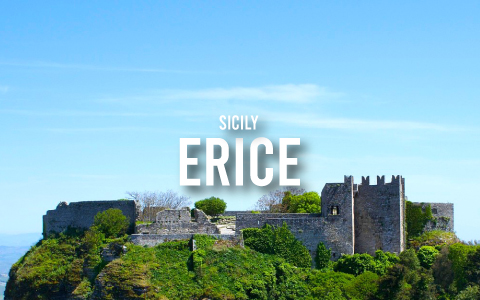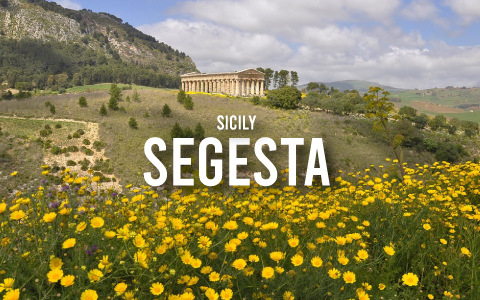
Exploring the Trapani Salt Pans in Sicily, Italy
Western Sicily is a land shaped by sea and wind, by centuries of trade and tradition. Between the rugged peaks of Monte Erice and the shimmering Tyrrhenian coast lies the town of Trapani. Known for its fishing heritage and baroque charm, it is also the gateway to some of Sicily’s most captivating sights: the medieval hilltop village of Erice, the Egadi Islands, and—perhaps most uniquely—the Salt Pans of Trapani and Paceco.
At sunset, these vast salt flats transform into mirrors of pink and gold. The reflection of the old windmills against the still waters evokes another era, when men, wind, and sun worked together to harvest “white gold” from the sea.
What are the Salt Pans
The Salt Pans of Trapani are part of the Riserva Naturale Orientata delle Saline di Trapani e Paceco and cover about 1,000 hectares of coastal wetlands between Trapani and Marsala. This protected area, managed by WWF Italy, is both a natural reserve and a cultural landmark.
The origins of salt production here date back to Phoenician times, around the 8th century BCE, when the settlers from the eastern Mediterranean recognized the perfect conditions for salt making: shallow coastal basins, abundant sunshine, and steady winds. Over the centuries, Romans, Arabs, and Normans refined the techniques, turning this part of Sicily into one of the Mediterranean’s most productive salt regions.
The process remains largely traditional even today. Seawater is channeled into large evaporation basins, where it slowly crystallizes under the summer sun. The characteristic windmills—once used to pump water between basins—are preserved as silent symbols of this ancient trade. The salt is harvested by hand, using wooden tools and centuries-old methods, preserving a rhythm that has barely changed in a millennium.
What to Expect When Visiting the Trapani Salt Pans
A visit to the Trapani Salt Pans is a journey through light, color, and silence. The landscape shifts throughout the day. At dawn, the pools shimmer silver-blue; by midday, they gleam white; and at sunset, they blush with tones of rose and orange, reflecting the sky like a watercolor painting.
The reserve is home to both industrial and artisanal saltworks, as well as an extraordinary ecosystem. More than 200 species of birds find refuge here, including herons, egrets, avocets, and the elegant pink flamingos, which have become the symbol of the reserve.
Highlights to explore include:
1. Museo del Sale (Salt Museum) at Nubia
Located inside a restored 17th-century windmill, the Salt Museum offers a fascinating look at the traditional salt-making process. Inside, you can see old tools, wooden carts, and photographs that tell the story of generations of salt workers. From the terrace, the surrounding basins stretch out toward the sea—a perfect place to watch the light dance across the water.
2. The Windmills and Salt Basins
Scattered across the reserve, the windmills are the most iconic sight of the Trapani salt pans. Some have been restored, others remain as romantic ruins, their blades turning gently in the sea breeze. Walking or cycling along the narrow paths between the basins allows you to observe the evaporation stages—from the shallow pink pools to the white crystalline mounds of freshly gathered salt.
3. The Salt Harvest
If you visit in July or August, you may witness the salt harvest, a tradition that combines hard labor and celebration. Workers, known as salinari, rake and gather the salt by hand into neat white pyramids that gleam in the sun. In the evening, the area often comes alive with small festivals and tastings celebrating the “fruit of the sea.”
4. The Coastal Viewpoints at Sunset
The stretch of road known as the Via del Sale (Salt Road), between Trapani and Marsala, offers some of the most breathtaking sunsets in Sicily. From the viewpoints near Nubia or the Saline Ettore e Infersa, you can watch the sun sink behind the Egadi Islands while the salt pans blaze with color.
Activities and Experiences to Do at the Salt Pans
Beyond admiring the scenery, the Trapani salt pans offer a range of experiences for nature lovers, photographers, and curious travelers alike.
1. Birdwatching
As you may have guessed, the reserve is one of the most important wetlands in Sicily for migratory birds. Spring and autumn are the best seasons to see flamingos, stilts, and oystercatchers. Bring binoculars and follow the marked observation trails; some of the hides allow close yet respectful encounters with wildlife.
2. Cycling and Walking Tours
Flat terrain and scenic routes make the area perfect for cycling. You can rent a bike in Trapani or join a guided tour that combines nature, history, and local culture. Walking tours are equally rewarding, with the salty breeze and distant hum of the windmills as your constant companions.
3. Taste and Shop Local Products
At the visitor centers and small shops around Nubia, you can sample Trapani sea salt, which is prized for its purity and mineral richness. Try it flavored with herbs, citrus, or even local wine. Some shops also sell sale integrale (unrefined salt), harvested manually and dried naturally under the Sicilian sun.
4. Boat Excursions and Photography Workshops
Several local operators offer boat tours along the coast between Trapani and Marsala, giving visitors a chance to admire the salt pans from the sea. Photographers will find the interplay of light, reflection, and windmill silhouettes endlessly inspiring, particularly in the golden hour before sunset.
How to Get There
The salt pans begin just a short drive south of the city of Trapani. Follow the signs for Nubia or Museo del Sale. You can reach the area by car, bicycle, or even on foot if you enjoy long walks.
If you are in Marsala you have to drive north along the SP21 coastal road, known as the Via del Sale. This scenic route passes through several salt farms and viewpoints. Allow at least 40 minutes for the journey, but plan more time to stop for photos.



